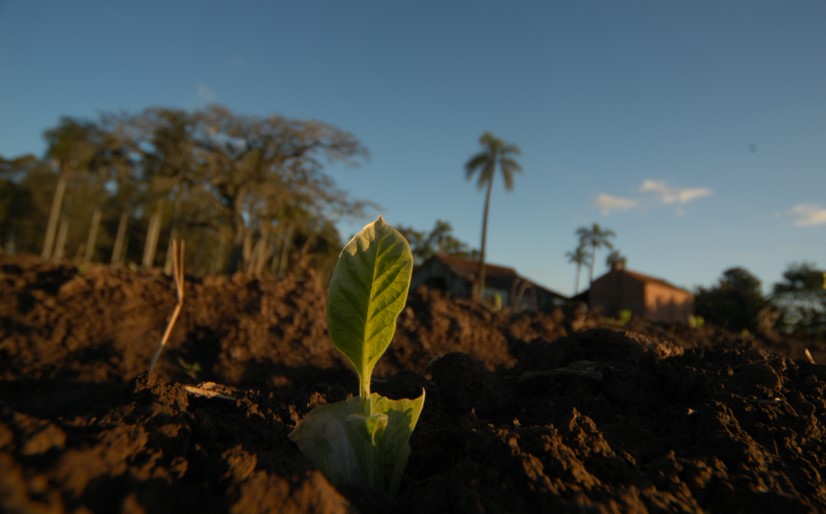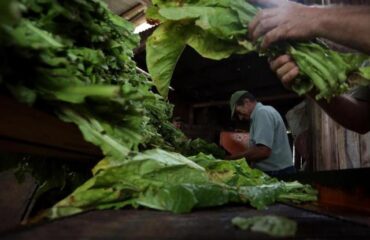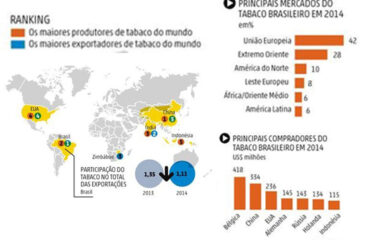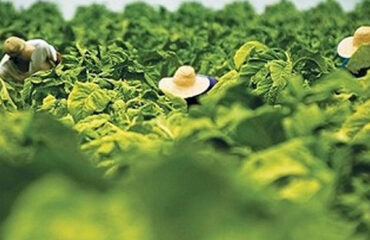Santa Cruz do Sul / RS – Winter 2015 will have temperatures and above average rainfall in southern Brazil, especially in the months of August and September. That’s because winter is under the influence of the climate phenomenon El Niño. Heavy rains in recent weeks are the effect of this variable. Under this scenario, tobacco farmers should take special care in soil conservation, crop management, and continued the trend on the fertilizer.
The 2014/15 harvest was under the influence of the phenomenon, but low-intensity, whereas currently it occurs more intensely. “There was a spot of abnormality, with rainfall above average in some regions, but in season 2015/16 El Niño is stronger”, points Iraldo Backes, agricultural engineer, technical manager of the Tobacco Growers Association of Brazil (Afubra).
Darci José da Silva, agronomist and technical advisor to the Interstate Association of Tobacco Industry (SindiTabaco), points out that the precipitation taking place at high volume and required attention about the harm they can cause to unprotected soil. “There’s no ways to avoid these natural phenomena. Then it is up to the farmer to guard using the techniques shown by research and technical assistance, “he says.
The conservation practices indicated long ago by the entities of tobacco farming and technical assistance, adopted by farmers, address the protection of the soil with cover crops, green manure. “Without a conservation plan, the land bare be subject to erosion under heavy rainfall and floods. Thus, in addition to the physical loss of soil, arable layer, you lose nutrients and the natural fertility, which will have consequences on soil management, hand labor and costs, “said Darci José da Silva.
According to the adviser to SindiTabaco, those using minimum tillage or no-till and preparing the ground in accordance with the recommendations, given the current climate framework, reduces the risk of loss and is at an advantage over the farmer who did not carry this way. The phenomenon’s behavior will depend on the care that must be taken in the management of culture.
If rains continue in transplant period of seedlings, nutrient losses occur which will require replacements. Aside from that, the adverse climate creates the prospect of a crop outside the normal range, that is, the tendency that some of the plants have lower yields. “The quality is not always affected, but productivity does. Under this condition, the baixeiras leaves usually presents losses because, near the ground, deteriorate with rain and humidity, “he says.
DOMAIN
Iraldo Backes, Afubra also provides higher costs and labor demand work with management processes, especially fertilization. Rain “washes” the farming soil and takes away much of the fertilizers applied, requiring the producer to replace the inputs to not lose quality and productivity,” he explains. For the technical manager of Afubra, before this unusual climate the farmer must have domain of the recommended cultural practices and the correct time to proceed so that the tobacco foot grow according to your reference standards and produce sheets of size and desirable texture.
If farmers do not add lost nutrients, the tobacco crop runs the risk of producing a lighter tobacco. Furthermore, there may be effects on the quality, because a weak plant, when the sheet is cured can be made lighter, more pulling a lime color unappreciated when marketing.
THE DAMAGE
- Excessive rains and floods generate physical and chemical losses of unprotected soils.
- Precipitation well above the normal causes leaching of the raw materials, particularly fertilizers, i.e., the rain washes the crop and take away fertilizers, and other inputs.
- The bottom of the leaves closest to the ground, are the most affected by moisture, generating losses or acting as pathogen gateway.
- Without the appropriate amount of fertilizer plants grow weaker and do not generate the expected productivity. Moreover, in some cases, can result in loss of quality of the leaves.
- In need to acquire more inputs, reapply and carry out management practices often beyond the ideal time, the farmer has more costs and run more risks to get a harvest below expectations in quality, productivity, production and income.
MAIN INDICATIONS
Cultivation minimum – One of the practices indicated by technical assistance, agencies and research centers is the minimum cultivation. In this system, instead of moving all the land of the crop, the farmer only way the ridges which is inserted compost and planted a sapling.
Tillage – Very practiced in southern Rio Grande do Sul mainly with the varieties of Virginia, the method consists in the formation of ridges in February and March, at the end of the previous harvest. On these ridges is made green manure seeding during the winter, usually oatmeal. Just before transplanting the seedlings, oats are dried out and the seedlings planted directly on the straw. The method is one of the main tools for soil conservation.
Staggered fertilization – Another method that can be adopted is the staggered implementation of fertilization. Instead of concentrating the use of NPK plus Chile salt pepper, to prevent heavy rain “wash” the crop and resulting in the loss of inputs, the producer share in two or three times the application. Increase the labor, but reduces the risk of total loss of inputs and having to repurchase them and reapply them. Installments, at least twice, the producer still save half volume to the second application and does not leave the plant without proper fertilization.
Source: Cleiton Santos Portal do Tabaco




